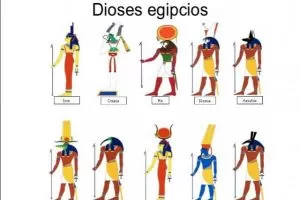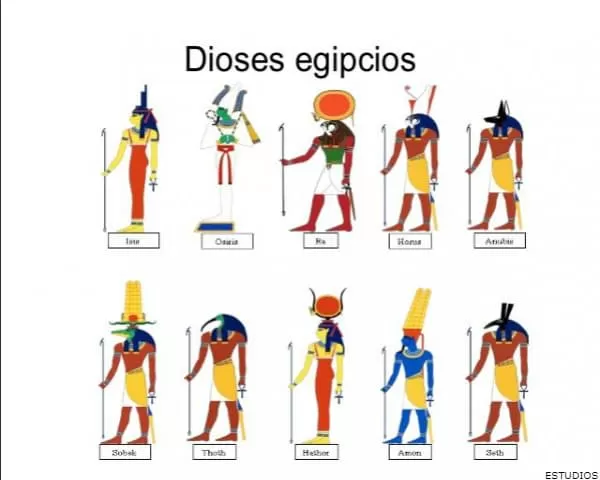List of Names of Egyptian Gods
The Egyptian pantheons were one of the greatest of civilisation in the ancient world. During the history of ancient Egyptian, hundreds of gods and goddesses were worshipped and adored. The particular characteristics of each of the gods becomes difficult to pinpoint.
Most had a principled association (for example, with the sun or the underworld) and form. But these could change over time as the gods increased and decreased in importance and evolved in a way that corresponded to the evolution of Egyptian society.
Click on any of the Images and Discover the Story of your favorite Egyptian Deity
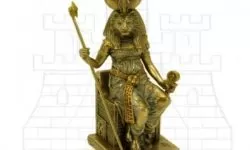
GODDESS SEKHMET: Goddess of Divine Vengeance, Conquest and War
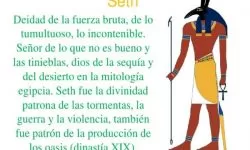
SETH GOD: Egyptian of Death, Confusion and Caos
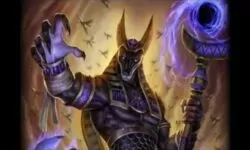
GOD ANUBIS: Who Is ? History and Mythology. The God of DEATH
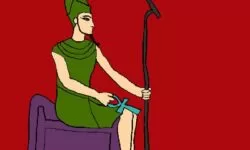
AMUN RA GOD: Who Is ? Myths and Powers
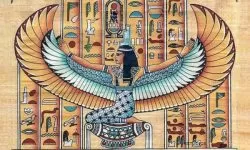
GODDESS ISIS: Symbol, Meaning, Facts and Images
Most Important Deities of Ancient Egypt
Ra
One of several deities associated with the sun, the god Ra was generally represented with a human body and the head of a god.
It was believed that he sailed through the sky in a boat every day and then made a passage through the underworld every night, during which he would have to defeat the snake god Apopis to get back up.
Ra’s worship centred on Heliopolis, now a suburb of Cairo. In time, Ra became syncretized with other sun deities, especially Amon.
Amon
Before reaching national importance in the New Kingdom (c. 1539-1292 BC), the god Amon was worshipped locally in the southern city of Thebes.
He was usually depicted as a man wearing a crown with two vertical feathers. His animal symbols were the ram and the goose.
After the rulers of Thebes rebelled against a dynasty of foreign rulers known as the Hyksos and re-established the native Egyptian government throughout Egypt, Amon received credit for his victory.
In a form merged with the sun god Re, he became the most powerful deity in Egypt, a position he held for most of the New Kingdom.
Amun (Amun-Ra) – God of the sun and air One of the most powerful and popular gods of ancient Egypt, patron of the city of Thebes, where he was worshipped as part of the Theban Triad of Amun, Mut and Khonsu.
Supreme king of the gods in some periods, although originally he was a lesser god of fertility. At the time of the New Kingdom, he was considered the most powerful god in Egypt and his worship was limited to monotheism. Other gods were even considered mere aspects of Amun at this time.
His priesthood was the most powerful one in Egypt and the position of the Wife of God of Amun was given to the royal women, almost on par with that of the Pharaoh.
Today, the huge temple complex dedicated to Amon-Re at Karnak is one of the most visited monuments in Egypt.
Anubis
Anubis was concerned about funeral practices and the care of the dead. He was usually depicted as a jackal or as a man with a jackal’s head.
The association of jackals with death and funerals probably arose because the Egyptians would have observed jackals sweeping the cemeteries.
In the Old Kingdom (c. 2575-2130 BC), before Osiris stood out as the lord of the underworld, Anubis was considered the chief god of the dead. According to the myth of Osiris, Anubis embalmed and wrapped the body of the murdered king, becoming the patron god of embalmers.
Aton
Aton, known as the solar divinity of ancient Egypt, which symbolized the beautiful and radiant solar disk of the sky, synonymous with the life force that gives breath to all inhabitants of the earth, being a key symbol of Egyptian mythology.
Horus
Represented as a hawk or as a man with a hawk’s head, Horus was a sky god associated with war and hunting. He was also the embodiment of divine royalty, and in some times the reigning king was considered a manifestation of Horus.
According to the myth of Osiris, Horus was the son of Isis and Osiris, magically conceived after the assassination of Osiris by his brother Seth. Horus was raised to avenge his father’s murder.
One tradition holds that Horus lost his left eye fighting Seth, but his eye was magically healed by the god Thoth.
Because Horus’ right and left eyes were associated, respectively, with the sun and the moon, the loss and restoration of Horus’ left eye provided a mythical explanation for the phases of the moon.
Osiris
Osiris, one of the most important deities of Egypt, was the god of the underworld. He also symbolized death, resurrection and the flood cycle of the Nile on which Egypt depended for agricultural fertility.
According to the myth, Osiris was a king of Egypt who was killed and dismembered by his brother Seth.
His wife, Isis, reassembled his body and resurrected him, allowing them to conceive a child, the god Horus. He was depicted as a mummified king, with wrappings that only exposed the green skin on his hands and face.
Seth
Seth was the god of chaos, violence, deserts and storms. In the myth of Osiris, he is the killer of Osiris (in some versions of the myth, he tricks Osiris into lying in a coffin and then closes it).
Seth’s appearance poses a problem for Egyptologists. He is often depicted as an animal or as a human with an animal’s head. But they can’t figure out which animal he’s supposed to be.
He usually has a long snout and long ears that are square at the tips. In its completely animal form, it has a slim body like a dog and a straight tail with a tuft at the end.
Many scholars now believe that no such animal ever existed and that the animal Seth is some kind of mythical compound.
Thoth
Thoth, the god of writing and wisdom, could be represented in the form of a baboon or a sacred ibis or as a man with the head of an ibis. He was believed to have invented language and hieroglyphic writing and to have served as a scribe and advisor to the gods.
As the god of wisdom, Thoth was said to possess knowledge of magic and secrets that were not available to the other gods.
In the scenes of the underworld that show the judgment suffered by the deceased after his death, Thoth is depicted weighing the hearts of the deceased and reporting the verdict to Osiris, the god of the dead.
Apis
It is known among the Egyptian gods as the son of Isis who was represented as a cow, this was fertilized by one of the rays of the sun and in ancient Egypt where the bull Apis was sacred, considered in the new empire as the herald of Ptah, Ka, Osiris and finally Sokar.
Thanks to this was considered as one of the members of the Egyptian gods who were directly associated with death.
Isis
Isis’ origins are obscure. Unlike many gods, she cannot be tied to a specific city, and there is no certain mention of her in the oldest Egyptian literature.
However, over time she grew in importance, and eventually became the most important goddess in the pantheon. As the devoted wife who resurrected Osiris after his murder and raised his son, Horus, Isis embodied the traditional Egyptian virtues of a wife and mother.
As the wife of the god of the underworld, Isis was also one of the main deities involved in the rites for the dead. Along with her sister Nephthys, Isis acted as a divine mourner, and her maternal care was often described as extending to the dead in the underworld. Isis was one of the last ancient Egyptian gods to be worshipped.
In the Greco-Roman period, she was identified with the Greek goddess Aphrodite and her worship extended westward to Britain and eastward to Afghanistan. It is believed that the depictions of Isis with the infant Horus influenced the Christian images of Mary with the infant Jesus.
Mut
Mut: an early mother goddess who probably played a minor role during the Predynastic Period (c. 6000-3150 BC) but later became prominent as the wife of Amun and mother of Khonsu, part of the Theban Triad. Mut was a protective deity associated with Bastet and Sekhmet.
She protected people in life and, in Spell 164 of the Book of the Dead, is depicted as a savior of souls trapped by demons in the afterlife. She was also the divine protector of the king and the state who roasted conspirators and traitors in her burning brazier.
Jonsu
Jonsu, known as the moon god in Egyptian mythology is associated with medicine, he was known as a protector of sick people, in addition to chasing away evil spirits, even represented fertility on earth and birth.
Ptah
Ptah was the head of a triad of gods worshipped in Memphis. The other two members of the triad were the wife of Ptah, the lion-headed goddess Sekhmet and the god Nefertem, who may have been the son of the couple.
The original association of Ptah seems to have been with craftsmen and builders. The architect of the 4th dynasty Imhotep was deified after his death as the son of Ptah.
Scholars have suggested that the Greek word Aiguptos, the source of the name Egypt, may have begun as a corruption of Hwt-Ka-Ptah, the name of one of the shrines of Ptah.
Sejmet
Sejmet, is the daughter of Ra the sun god, the most important in Egyptian mythology, this deity is represented with a woman’s body, a lioness’ head and on it a solar disk, this goddess always wore a long red dress which personified her roots.
Nefertum
Nefertum (Nefertem) – God of perfume and sweet smells. Nefertum was born from the bud of the blue lotus flower at the dawn of creation and was originally an aspect of Atum. Its name means “Beautiful Atum”.
Later it was considered its own deity and was associated with sweet-smelling flowers. It is associated with rebirth and transformation through its link with the god of sun and flowers. In the Egyptian medicine he was called to cure the scents to cure diseases and associated with incense.
Hathor
The goddess Hathor was usually depicted as a cow, as a woman with a cow’s head, or as a woman with cow’s ears. Hathor embodied motherhood and fertility, and was believed to protect women in childbirth.
She also had an important funerary aspect, as she was known as “the lady of the west”. (Tombs were usually built on the west bank of the Nile.) In some traditions, she welcomed the setting sun every night; living people expected to be welcomed into the afterlife in the same way.
Harsomtus
In Egyptian mythology Harsomtus was a creator god, recognized as the unifying god of the two lands, he is also attributed as the god of food, creation and fertility.
Jnum
Jnum or also known as Cnum, is one of the most ancient Egyptian gods, he was the creator god of Elephantine and Esna, they faithfully believed in him as if he was the creator of the primordial egg from which the sun rose at the beginning of the world, he can be mentioned as a god represented by a big ram on the head, he is also known as the only “god of the sources of the Nile river.
Anukis
Of the Egyptian gods, Anukis is the goddess of water, particularly linked to the Nile, the Aswan Falls and the waters in Nubia, for some she was recognized as the ruler of Nubia, when the waters overflowed they conceived the floods as the great embrace of Anukis, which brought with it the fertility of the land.
Meaning of the Egyptian Gods
- Ra: Known as the God of the Sun
- Amon: He was a god of the air, and the name probably means “The Hidden One”.
- Amun Ra: God of sun and air.
- Anubis: He was considered the main god of the dead
- Aton: Symbolized the beautiful and radiant solar disk of the sky
- Horus: He was a sky god associated with war and hunting.
- Osiris: He was the god of the underworld.
- Seth was the god of chaos, violence, deserts and storms.
- Thoth, the god of writing and wisdom.
- Apis: He was one of the gods of the sun, fertility and finally funerary.
- Isis: was one of the main deities related to the rites to the dead. She was the wife of the God of the Underworld.
- Mut was a protective deity.
- Jonsu: he was known as a protector of the sick, in addition to chasing away the evil spirits, even represented thefertility on earth and birth.
- Ptah God of craftsmen and builders.
- Sejmet was known as the eye of his father Ra the god of the sun.
- Nefertum (Nefertem): God of perfume and sweet smells.
- Hathor: He embodied motherhood and fertility, and was believed to protect women in childbirth.
- Harsomtus: He was a creator god
- Jnum: He was the god of the waters that circulated in the lower world.
- Anukis: is the goddess of water
What Were the Egyptian Gods Like ?
The ancient Egyptian gods and goddesses represented aspects of the natural and “supernatural” environment of the Egyptians and helped them to understand its many aspects.
Most Egyptian gods represented a major aspect of the world: Ra was the god of the sun, for example, and Nut was the goddess of the sky. The characters of the gods were not clearly defined.
Most of them were generally benevolent, but you could not count on their favor. Some gods were spiteful and had to be appeased. Some, like Neith, Sekhmet and Mut, had interchangeable characters. The god Seth, who murdered his brother Osiris, embodied the malevolent and disorderly aspects of the world.
The physical form adopted by the various Egyptian gods was usually a combination of humans and animals, and many were associated with one or more animal species. And one animal could express the mood of a deity. When a god was angry, she could be depicted as a fierce lioness; when gentle, a cat. The convention was to represent the animal gods with a human body and an animal head.
The opposite convention was sometimes used to represent a king, who could be portrayed with a human head and a lion’s body, as in the case of the Sphinx. Sphinxes can also appear with other heads, particularly those of rams or falcons.
Many deities were represented only in human form. Among them were figures as old as the cosmic gods Shu of the air, Geb of the earth, the god of fertility Min and the craftsman Ptah. There were several lesser gods who adopted grotesque forms, including Bes, a dwarf with a face similar to a mask, and Taurt, a goddess whose physical form combined the characteristics of a hippopotamus and a crocodile.
How Did the Egyptian Gods Live ?
Many ancient religions claimed that their gods lived in high places, such as Mount Olympus, the residence of the Greek gods, or Mount Everest, the residence of several Hindu gods. The Egyptian religion is a little more ambiguous in attributing a place of residence to its gods.
According to the ancient Egyptians, the world consisted of earth, sky and Duat. Duat was the underworld, where the Judgment of Osiris was held and the spirits of the dead men were judged. The gods, in general, lived in the sky. In any case, the Egyptians did not clearly attribute a place of residence to their gods. Their usual home was the sky, but if their function was specifically related to a place, they lived in that place.
For example, the god Ra was the sun, so their residence was the sky, and it was possible to see it every day. The goddess Isis was the Nile, so her residence was in this river. Also, the Egyptian gods were not far from the earth, the world of men. Even those who lived in the sky had temples on earth. And the temples were also places of residence of the gods.
In fact, it was believed that every day the gods left the sky and settled in the temples to interact with the world of men. For this reason, temples were sacred. The land of ancient Egypt was alive with the spirit of the gods. The sun god Ra came out of the darkness every morning in his great boat, bringing the light, and many of the gods watched over the people at night like the stars.
Osiris made the river Nile flood its banks and fertilize the land, while Khnum directed its flow. Isis and her sister Nephthys walked with the people of the land in life and protected them after death, just like many of the other gods, and Bastet looked after the lives of the women and looked after the house.
Tenenet was the goddess of beer and brewing and was also present at the birth, while Hathor, who had many roles, was a close companion at any party or festival as the Lady of Drunkenness. The gods and goddesses were not distant deities to be feared, but close friends who lived among the people in the temple houses built for them, in the trees, lakes, streams, swamps, and in the desert beyond the valley of the Nile River.
When the warm winds blew from the arid wastes, it was not only a confluence of air, but the god Set caused some problems. When the rain fell, it was a gift from the goddess Tefnut, “She of Moisture”, who was also associated with dryness and was asked to contain the rain on the holidays.
Human beings were born from the tears of Atum (also known as Ra) when he cried for joy at the return of his sons Shu and Tefnut at the beginning of time, when the world was created from the waters of chaos. In all aspects of life, the deities of Egypt were present and continued to care for their people after death.
How Did the Egyptian Gods Disappear ?
The ancient Egyptians replaced one belief system with another. And this happened several times in their spiritual history. The Egyptians went from a belief in many gods to a very short time when their ruler tried to impose a radically different belief system of a god on them. A belief system finally rejected,
Later, some Egyptians embraced the Hellenistic pantheon. Finally, they embraced Christianity and eventually converted to the Muslim religion. Actually, there are many similarities between the ancient Egyptian religion and our modern faith, but one very clear difference is that the Egyptian gods had a finite “birth” and “death”.
In fact, they could die, and then they could also cease to exist. What this means is that, like the Egyptians themselves, the gods could die and resurrect, sometimes on a cyclical basis, but there would also be an end time when they would permanently disappear from existence.
To some extent, it is interesting that the Egyptians actually thought in terms of a beginning and end of time. As they watched their crops grow, they would die, be fertilized by the mud from the Flooding of the Nile, and grow again.
In fact, to understand the ancient Egyptian religion is to understand that, with the exception of a few isolated statements during specific periods of Egyptian history, the gods of Egypt were inherently vulnerable. In many ways, it is clear that the ancient Egyptian gods were made in the image of humanity, rather than the other way around.
They were not the “perfect Almighty God,” for most (if not all) were born, or at least came into existence at a specific time in creation, made mistakes, suffered emotions, many had wives and husbands with whom they had children, and fought with each other. Sometimes with the greatest of them suffering defeat, more and more over time, the gods of ancient Egypt took on the weaknesses and limitations of their human subjects.
Studies of Other Mythological Gods in ALPHAPEDIA
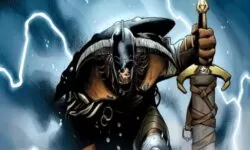
NORSE GODS: Names, Meaning, Powers and History
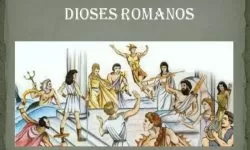
ROMAN GODS: Names, Meanings and Characteristics
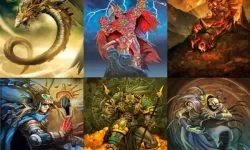
AZTEC GODS: List of Names, Meanings and Powers
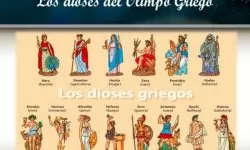
OLIMPUS GODS: ¿ Who Are ? ¿ What Are ? Names and Powers
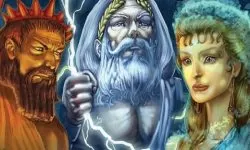
GREEK GODS: Names, Family Tree and Their Powers
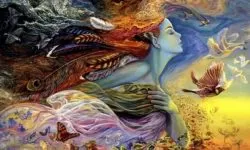
THE GODDESSES OF MYTHOLOGY: Their Names and Meanings
Astrology in ALPHAPEDIA
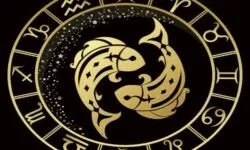
AQUARIUS: Meaning, Characteristics and Personality
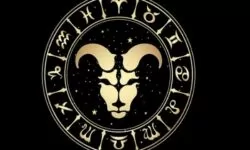
ARIES ZODIAC SIGN: Meaning, Characteristics and Personality
Other Topics of Interest in ALPHAPEDIA

FREE MASTER DEGREE IN MARKETING

FREE GARDENING COURSE

FREE KARATE COURSE

FREE AFTER EFFECTS COURSE

FREE BACHELOR OF INFORMATION TECHNOLOGY

FREE BACHELOR DEGREE IN PHILOSOPHY
IMAGES OF EGYPTIAN GODS
